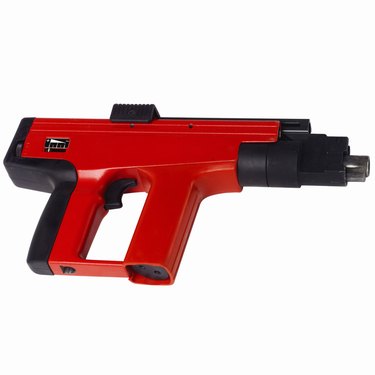
Nailers, also called nail guns, make the task of driving home several nails easier. Instead of hitting a nailhead multiple times with a hammer, the nailer shoots the nail into the wood in one step. This prevents sore thumbs and cracked paneling from wild hammer strokes. To install tongue-and-groove paneling, you will need a nailer to insert the 6d nails required for attaching the paneling to the wall.
Tongue-and-Groove Paneling
Video of the Day
Tongue-and-groove paneling gets its name from its shape. These boards have a channel on one side that fits into the projection on another board like puzzle pieces. As each successive piece fits into the one before it, it covers the nails. This process is called blind nailing, and it can be done with a nailer.
Video of the Day
Blind Nailing
Blind nailing is a technique used to give a clean, finished look to woodwork. With tongue-and-groove paneling, the nails are inserted into the groove and hammered to below the surface. To ensure that the nail gets into the groove where it will be hidden, it must be inserted at an angle. Because the nail goes in at an angle and needs to be sunk, a nail gun is a better option than a hammer. You should use two nails per board in the tongue-and-groove paneling, one at the top and one at the bottom.
Type of Nails
When choosing a nailer, look at the types of nails it uses. For installing tongue-and-groove paneling, you need 6d finishing nails. These 2-inch long nails have a narrow head that sinks below the surface of the wood. Nail styles are often not interchangeable between nailers because the guns cannot handle every type of nail -- that is why there are different nailer types.
Nailer Options
The wide range of nailer options should not stop you from using a nailer to install tongue-and-groove paneling. You will need a nailer capable of installing 6d finishing nails. A finishing pneumatic nail gun will work because they are capable of handling finishing nails between 2d and 6d in size. Look to hardware stores for nail gun rental or purchasing options. You will also need a compressed air tank to operate the nail gun. Avoid brad nailers, which are nail guns that insert tiny brads into thin trim for cabinetry. A brad nailer cannot handle the larger finishing nails required for tongue-and-groove paneling. Power-actuated nail guns are too powerful for the task and are used for nailing into masonry or cement.